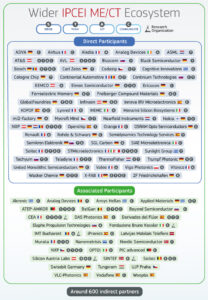A fund backed by the Japanese government has reportedly agreed to buy Japanese photoresists supplier JSR. The deal would represent an additional effort of the Japanese government to revitalize its domestic semiconductor industry. Among the other interesting news this week, Intel implicitly admitting (in this press release) that it is currently spending up to $1.5 billion per year due to operational inefficiencies that its competitors don’t have. This refers to expedited wafers and test times, as explained below.
Intel to adopt an internal “fabless-foundry” model
Intel will adopt a new operating model where its internal product groups will move to a foundry-style relationship with the company’s manufacturing group. In this new “internal foundry” model, Intel’s product business units will engage with the company’s manufacturing group in a similar fashion that fabless semiconductor companies engage with external foundries. Intel’s manufacturing groups will be accountable to a standalone profit and loss (P&L) for the first time. The company expects this change to boost efficiency and therefore deliver significant cost savings. One example concerns “expedited” wafers that business units decide to move through Intel’s manufacturing process, which are costly and reduce factory efficiency. Going forward, this service charge will be borne by the business units, and it’s expected that it will reduce the number of expedites “to be on par with the competition”. Another example concerns Intel’s test times, which currently run “double or triple those of competitors”. As business units are charged market prices based on test time, Intel expects pre-silicon design choices to reduce these test times.








